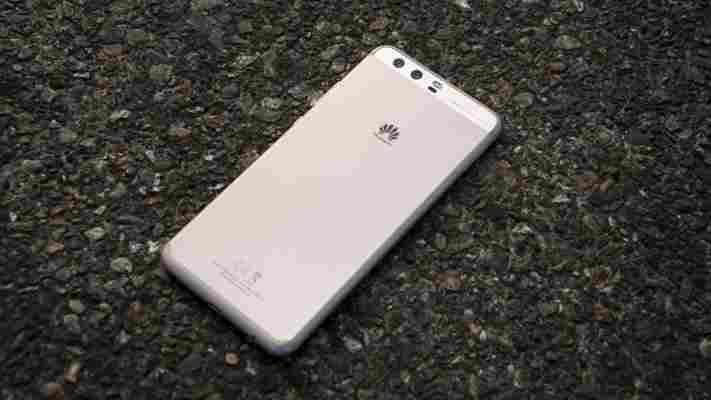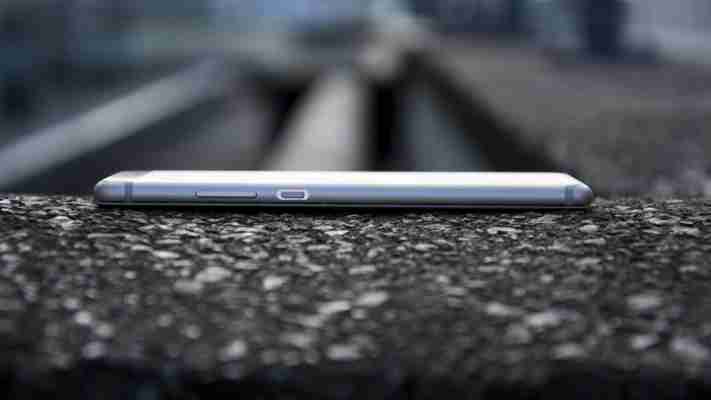The P10 Plus is Huawei’s latest flagship smartphone, and it comes with an eye-watering £680 price tag. Launched alongside the regular P10 at MWC 2017, it offers a larger 5.5in QHD display, an upgraded camera and a diamond-cut finish. It also costs £110 more than the regular P10.
Huawei P10 Plus review: What you need to know
While LG and Samsung have chosen taller, narrower shapes for their latest phones, Huawei has retained the familiar 16:9 aspect ratio for the P10 Plus. It’s far from anonymous, though, with a stylish finish that makes it look and feel different from any other smartphone on the market, and it’s available in seven colours: Ceramic White, Graphite Black, Dazzling Gold, Rose Gold, Greenery, Dazzling Blue and Mystic Silver.
One key new feature is the dual-sensor rear camera, which gains a 20-megapixel sensor – up from the 12-megapixel sensors in last year’s P9 and the regular P10. With an f/1.8 aperture at the rear and f/1.9 at the front, the P10 Plus is also able to collect more light than any other Huawei device, making it better for low-light photography.
Inside, a Kirin 960 processor and 6GB of RAM make the phone fly, and a huge 128GB of internal storage offers plenty of space for all those images.
READ NEXT: Huawei P10 review: The ultimate dual-lens smartphone gets a facelift
Huawei P10 Plus review: Price and competition
At £680, the Huawei P10 Plus is not a cheap device. For the same price, or slightly less, you can buy a Samsung Galaxy S8 or an LG G6 . It’s also more expensive than both the iPhone 7 at £579 and the £600 Google Pixel , which remains the best camera smartphone on the market. The question is whether the P10 Plus offers enough to compete with these premium phones.

READ NEXT: Samsung Galaxy S8 review: Hands on with the big-screened LG G6 adversary


Huawei P10 Plus review: Build quality and design
Huawei has pulled out all the stops when it comes to build quality and design. The gorgeous diamond-cut finish around the back gives the P10 Plus a stylish, high-end appearance. It’s also very easy to grip, so you don’t need to worry about accidental slips, and the phone’s smooth edges make it comfortable to hold.

The metal ring that links the front chassis to the rear plate adds another touch of class, while a small red ring around the textured power button makes it easy to distinguish. All these little things add up to make the Huawei P10 Plus the best-looking phone I’ve ever seen.
Like the 5.1in P10, the P10 Plus has a front-facing fingerprint sensor. At first, I wasn’t sure about its placement, as I still love using the rear fingerprint sensor on my Huawei P9. However, there is a benefit to doing it this way: Huawei has integrated the Android navigation buttons into its fingerprint sensor, giving you back the bottom part of your screen.
The way it works takes a little getting used to. Tapping the button once goes back; a tap and hold takes you to your homescreen; and a swipe to the left or right takes you to recent tasks. You can also access the Google app by swiping upwards on the right edge of the phone. Once I’d got the hang of this, I quickly stopped missing the onscreen navigation keys, and indeed found I preferred using a single navigation button. It’s just a shame you can’t swipe down on the sensor to reveal recent notifications, as you can on the P9.
The P10 Plus comes with a dual-SIM card slot, whose second slot can also take a microSD card, enabling you to expand your storage by up to 256GB. A 3.5mm headphone jack, speaker and USB Type-C port are found at the bottom of the phone. There’s also an IR blaster at the top of the phone, for controlling a TV or receiver through your phone.
READ NEXT: Samsung Galaxy S8 Plus review: Hands on with Samsung’s 6.2in monster
Huawei P10 Plus review: Display
At 5.5in, the IPS screen on the P10 Plus is a fair bit bigger than the 5.1in display of the regular P10. But size isn’t the only difference: the P10 Plus also has a higher QHD (1,440 x 2,560) resolution, representing a 540ppi pixel density. That makes it ideal for virtual-reality applications.
The display is bright, at a measured 587.1cd/m2 maximum brightness: I had no trouble using the phone under bright sunlight. Colour reproduction is good, too, with a 98.5% sRGB gamut coverage.
Its tested 0.44cd/m2 black level is disappointingly high, however, so dark scenes in movies will be a little lighter than they should be. I measured its contrast ratio at 1,326.9:1 – some way behind the LG G6’s HDR display, which delivered a 2,112:1 maximum contrast ratio. At this price, I’d have hoped the P10 Plus would include an HDR screen, since HDR video content is increasingly becoming available.
READ NEXT: LG G6 review: Can it beat the Galaxy S8?
Huawei P10 Plus review: Software
The P10 Plus ships with Android 7 Nougat and EMUI 5.1, Huawei’s own overlay. It feels perfectly fluid, and Huawei claims that various techniques used to defragment, compress and recycle RAM will prevent Android from slowing down after a few months of usage.
Obviously at this point it’s too early to say if it really works: I’ll update this review in a few months’ time with any observations.
READ NEXT: Our pick of 2017's best smartphones
Huawei P10 Plus review: Performance
Huawei’s 2017 handsets are based on the impressive HiSilicon Kirin 960 chipset. The P10 Plus thus benefits from an octa-core processor – comprising four 2.4GHz Cortex-A73 cores and four 1.8GHz Cortex-A53 cores – along with 6GB of RAM. It flies through intensive tasks: no matter what I threw at it, from heavy multitasking to graphically intense games, the P10 Plus provided impressive performance.
The Geekbench 4 benchmark confirms its multi-core power. Single-core performance isn’t quite so spectacular, but that’s no surprise given the relatively low clock speeds. Overall, performance was similar to the P10 and Honor 8 Pro, both of which use the same Kirin 960 chipset.
^Huawei P10 Plus review: Geekbench 4
When it comes to gaming performance, the P10 Plus isn’t quite a top performer, but it certainly proved smooth enough for my mobile gaming needs. In the offscreen 1080p gaming benchmark it delivered almost double the frame rate of last year’s P9 Plus. In the onscreen test its score of 26fps was also respectable, bearing in mind it’s driving a QHD display.
^Huawei P10 Plus review: GFXBench Manhattan 3.0
Battery life is a little disappointing. Even though the P10 Plus’ 3,750mAh battery is larger than the 3,200mAh unit in the P10, the handset survived only 12hrs 21mins in our standard battery test, compared to the P10’s 13hrs 12mins. Nevertheless, you should get through the day on a single charge if you don’t use it too heavily.
READ NEXT: Best power banks in the UK 2017: The best portable chargers you can buy
